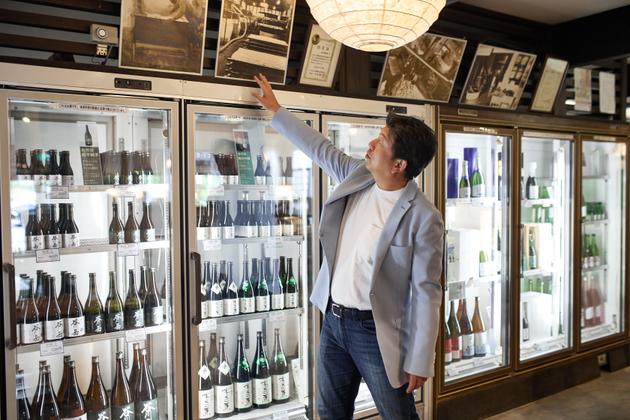In Tokyo’s small Tachinomi Kuri sake bar, businessmen wait patiently in line. After work, it’s not uncommon to see white-collar workers stopping for a drink on their way home. Sake, whose alcohol content rarely exceeds 16%, is usually consumed standing up and quickly, with each glass costing around 500 yen (around €3). The constant flow of customers and the impressive range of spirits displayed in small barrels with colorful labels (samurai, landscapes, manga characters) might give the impression that sake is still the king of Japanese bars.
But this is not the case. According to Japan’s National Tax Agency, annual alcohol consumption per adult in Japan has fallen from 100 liters in 1995 to 75 liters in 2020. Rice wine has been overshadowed by trendier drinks such as beer and highballs (cocktails mixing soda and spirits). The decline of national sake is such that in 2023, the government funded a campaign to boost sales among young people.
Sake’s revival is largely due to the ingenuity of brewers like Noriyoshi Nagai, manager of Nagai Sake Brewery, located at the foot of the misty mountains of Gunma prefecture, two hours north of Tokyo. He first took us into a pine forest overlooking the company. Near a river, he pulled a champagne-like bottle from an ice bucket. This presentation served above all to illustrate the evolution of his approach, as his spirits have little in common with those of his great-grandfather, a samurai who traded in his katana to found the brewery in 1886.
The sparkling sake parade
The bottle mimics the style of champagne: green glass, a wire cage tightened around the neck and a cork that pops with a characteristic sound when opened. When tasted, it’s a sparkling sake, an elegant product with fine bubbles, a milder flavor than French sparkling wine and notes of lychee. “I made over 700 unsuccessful attempts to achieve this result,” confessed Nagai. “I was inspired by the Champagne method after visiting French vineyards. I was the first to launch this double-fermented product. I didn’t just want to inject gas into sake, but also capture the subtlety of champagne.” His determination has paid off: After a difficult start in 2008, his sparkling sake now accounts for 20% of his sales.




Sparkling sake is one way of fighting declining sales. Another approach is to highlight the local terroir. At his brewery’s tasting room, the metal curtains on the windows open to reveal a grandiose landscape structured by a grid of rice paddies. “Many breweries are located in cities and use rice purchased from distant regions,” explained Nagai. “The notion of ‘terroir’ doesn’t have much meaning in this industry. But our strength lies in the nature that surrounds us. We have created sakes with yukihotaka rice, grown near the brewery. The water, which makes up 80% of our sake, comes from particularly gentle underground springs that run beneath our feet.”
You have 61.01% of this article left to read. The rest is for subscribers only.